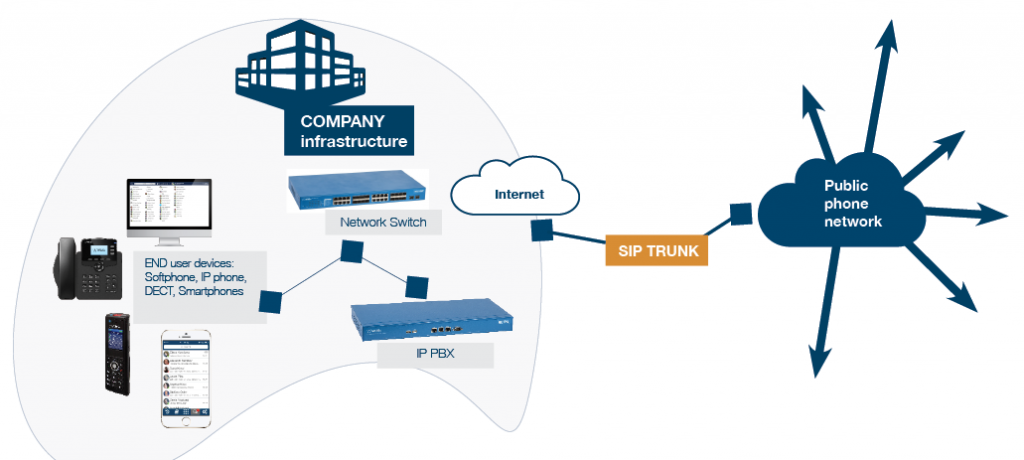 SIP Trunking
SIP Trunking
SIP Trunking is the most popular way to add PSTN connectivity to a modern UC solution.
A few words of advice:
- Fax support: if the UC solution will need to transfer faxes, you need to make sure the operator has official T.38 capability.
- Routes quality: these should be extensively tested over national, mobile, and international destinations for the following:
- Audio quality
- Connection speed
- CID shown on the remote side
- Set custom outgoing CID: a great feature for mobility and call forwarding
Many improvised operators offer low-quality services, which can compromise both call quality and overall service quality.
PSTN Connectivity via Media Gateways or on the Server?
Legacy PBXs have always been connected to PSTN lines via (usually proprietary) boards or expansion boards installed in the PBX itself.
When manufacturers introduced VoIP support in their products, instead of coming up with a full modular and IP solution, they added a VoIP module to their existing systems. This is the case for many brands including Alcatel, Avaya, Siemens, and several others.
This approach is clearly a relic of the past. The core of a UC Solution is pure software, so any platform hardware or virtual machine (VM) should be supported. Instead of using specialized hardware, the connection to external lines should be offered via separate media gateways that support SIP.
Media gateways have many advantages, since they are:
- Modular and scalable
- Easy to install and replace
- Remotizable over LAN and the Internet
- No system down times when one is added
In the event of overvoltage, media gateways offer the extra protection by being completely separated from the UC server. An overvoltage from the PSTN line will, thus, affect the media gateway and spare the rest of the system.
Separating PSTN connectivity from the UC server also allows installations where media gateways offer connectivity to local users without adding a local PBX. Because of this, small, remote offices can be serviced by phones and media gateways, for which the remote UC server only performs call routing.
Survivability and Failover
By using media gateways, it is easy to create failover or load distribution configurations by installing two UC servers. When the primary server is down, the media gateway will automatically switch to the second.
Even when all of the UC servers are not working, for any reason, the media gateways can allow emergency and simple call routing of local user calls.
This feature is called survivability. As soon as the UC server is down, phones can use the media gateway as backup destination. At the same time, the media gateway should route incoming calls to only a few selected phones.
PSTN Connectivity
Today’s media gateways support all kinds of connectivity:
- Analog FXO / FXS lines
- E1 / T1 / J1 links (including support for Qsig, Q.931, and SS7)
- GSM network
- ISDN
Additionally, they embed many important features including:
- PSTN protocol tracing
- Debugging
- Monitoring via SNMP
- Security and encryption via HTTPS
- Provisioning
- Separate syslog facilities
Protocol tracing checks for signaling and other issues, without requiring expensive debug tools or a visit to the site where the line is located. Such features can reduce response and solution time when problems arise.
